Fourth Trimester: 12 Weeks Postpartum
Respect your body’s recovery time, see a women’s-health physical therapist, and gently ease back into a fitness routine.
In 2018 the American College of Obstetricians and Gynecologists (ACOG) revised its recommendations for postpartum care, reinforcing the importance of the so-called fourth trimester.
ACOG now recommends that all women see their ob-gyn or midwife within three weeks after the baby’s birth, receive ongoing care as needed, and follow up with another visit within 12 weeks. This can help identify and address recovery issues.
Childbirth, whether by vaginal delivery or C-section, presents a major challenge for the body: The pelvic floor and abdominal wall may be stretched, weakened, or damaged, and the pelvis may fracture or become misaligned.
With this in mind, weight loss or “getting your body back” ought to be the last thought on your mind. Movement can be a powerful healing tool during the fourth trimester — if you consider it just that.
“The point of postpartum exercising is taking care of yourself — physically, mentally, and emotionally,” says Mundell. “Ask yourself, ‘Am I able to do activities of daily life in a way that my body is able to support?’ That is the most appropriate mindset during the fourth trimester.”
Taking the first postpartum week to completely rest allows your body to undergo its natural healing process. “It’s important to prioritize sleep, make sure you’re eating enough and staying properly hydrated, and not trying to push through,” explains Winters.
Depending on your type of delivery, you can then try gentle movements and breath work to help yourself reconnect with your core muscles, says Plasencia, who recommends seeing a pelvic-floor specialist or women’s-health PT before ramping up workouts. “If you can see a PT early on, you can get back on track so much faster.”
In addition, a PT can examine bones, joints, and muscles around your pelvis and address imbalances. If you’ve had a C-section, your PT might do scar-tissue mobilization after six weeks to prevent adhesions.
If you’re cleared for strength training during the weeks after delivery, focus on rehab, with an emphasis on reconnecting to the core during movement and restoring alignment. No single exercise will heal diastasis recti, mend pelvic-floor muscles, or restore core strength. Results come from consistently applying good strategy, gradually increasing load, and willingly adjusting your regimen if concerns arise.
“You’re not picking up where you left off third trimester or before pregnancy,” says Battles. “Remind yourself that this is all temporary and that you have the rest of your life to get back into fitness.”
Exercises to Try
Heel Slides: This exercise helps you reconnect to your deep core muscles and strengthen your posterior chain.
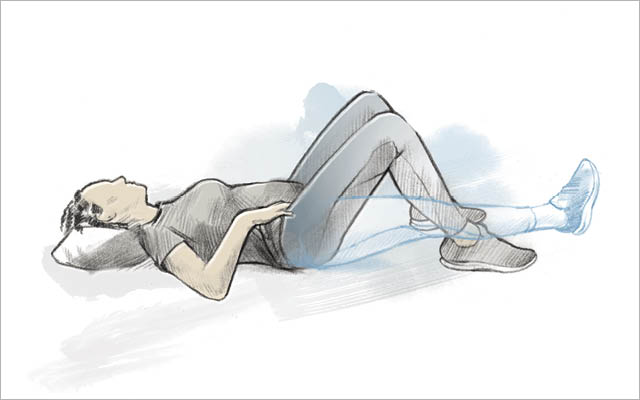 Illustration: James Carey
Illustration: James Carey- Place a pillow under your head and shoulders, lie on your back with knees bent and feet on the floor, and maintain a neutral spine.
- Bring your right knee to a tabletop position, just over your hips. Inhale, letting your rib cage expand and your belly stay soft.
- Exhale and lift your pelvic floor, as though trying to stop the flow of urine. Continuing to exhale and stay engaged, extend your right heel until it hovers above the ground and then return your leg to tabletop. Inhale and relax at the top.
- Perform six reps, then switch sides.
Glute Bridge With Ball Squeeze: This move will strengthen your glutes and hips, including your side-butt, which will protect your pelvis and lower back. It can also help strengthen your pelvic-floor muscles as you heal postpartum.
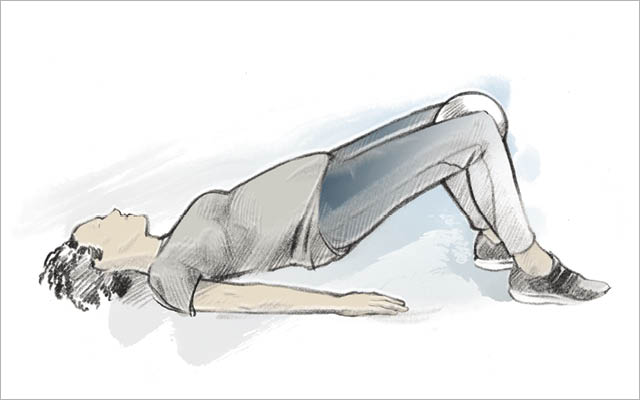 Illustration: James Carey
Illustration: James Carey- Lie on your back with knees bent and place a squishy ball or other soft object between your knees. Exhale, then press your feet into the ground to lift your hips, maintaining a neutral spine. Inhale and relax your abdomen and pelvic floor muscles.
- Staying in a bridge position, exhale and lift your pelvic floor as you squeeze the ball between your knees. Then gently relax your pelvic floor as you inhale, still in a bridge position with the ball secure.
- Perform 10 to 12 reps.
Pec-and-Shoulder Release: This stretch helps release the tension in the front of the body that many new moms have due to holding a baby for so many hours of the day. .
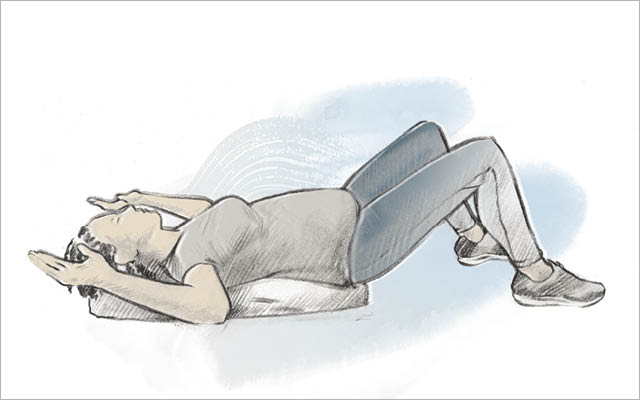 Illustration: James Carey
Illustration: James Carey- Place a folded blanket or towel on one end of a foam roller and lie on your back lengthwise, using the blanket as a bolster for your head.
- Bend your knees and keep your feet flat on the ground. Maintain a neutral spine.
- Bring your arms to your sides in a field-goal position.
- Stay there for at least one minute and allow gravity to release the tension in your upper body.
This originally appeared as “Fit for Two” in the April 2019 print issue of Experience Life.
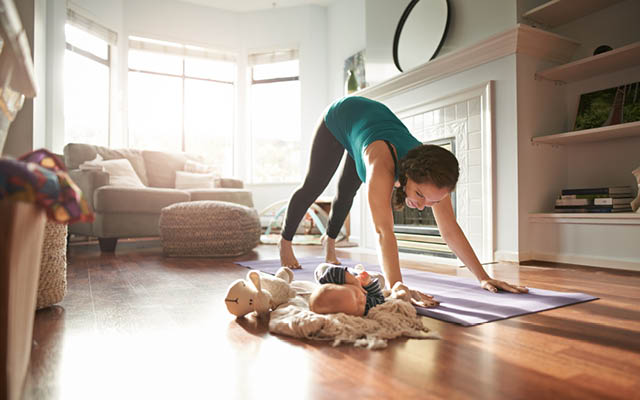
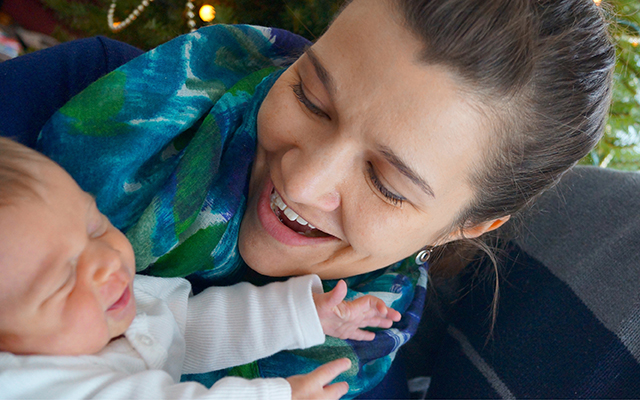
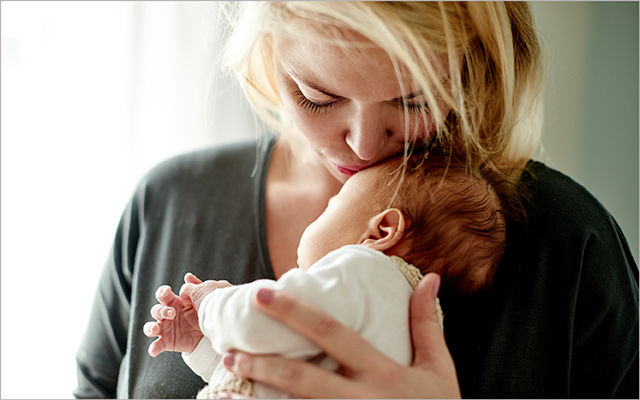
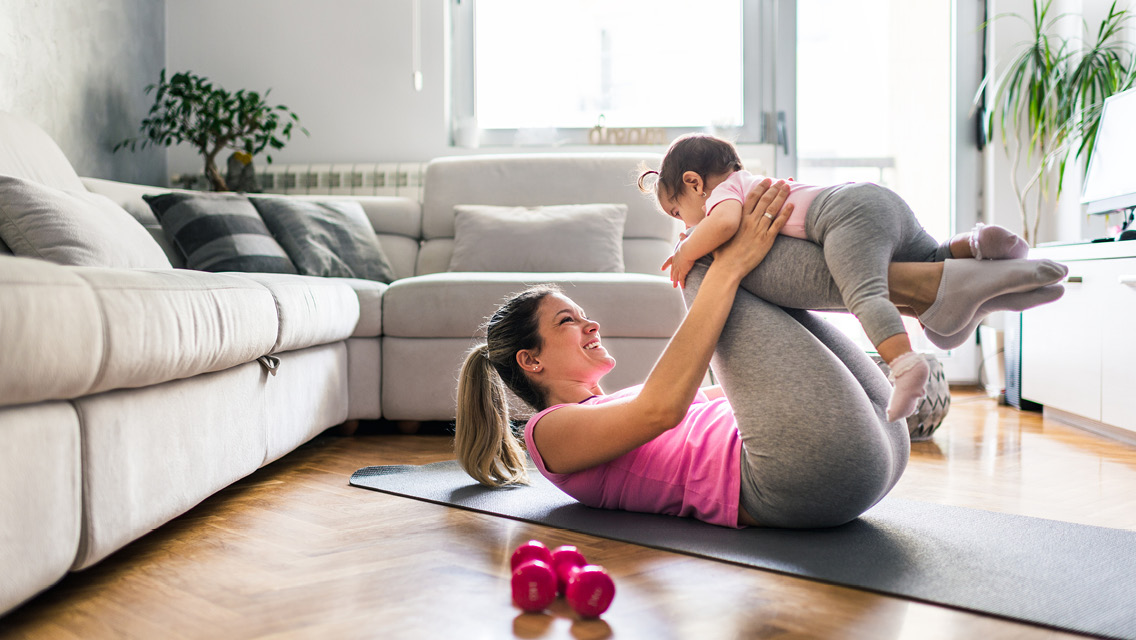
This Post Has 0 Comments